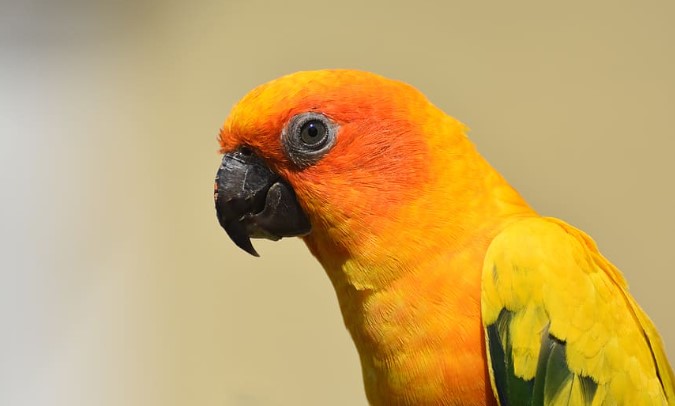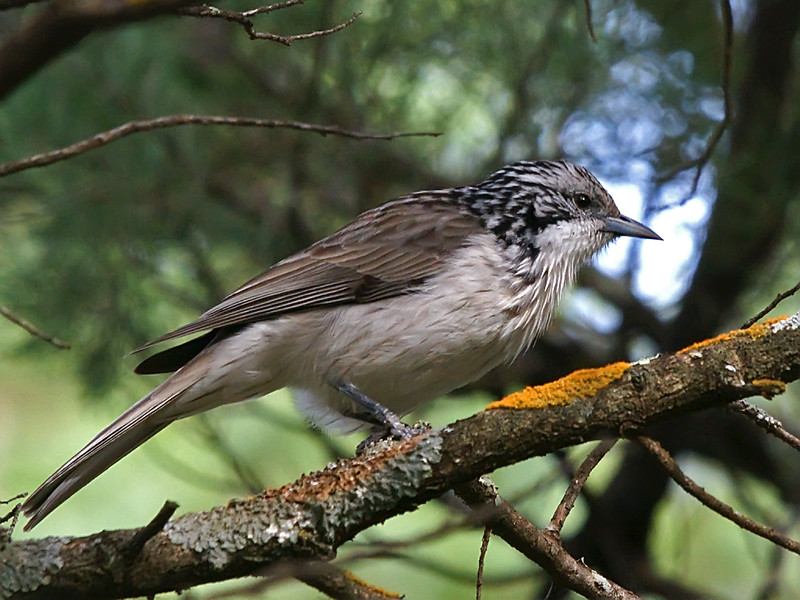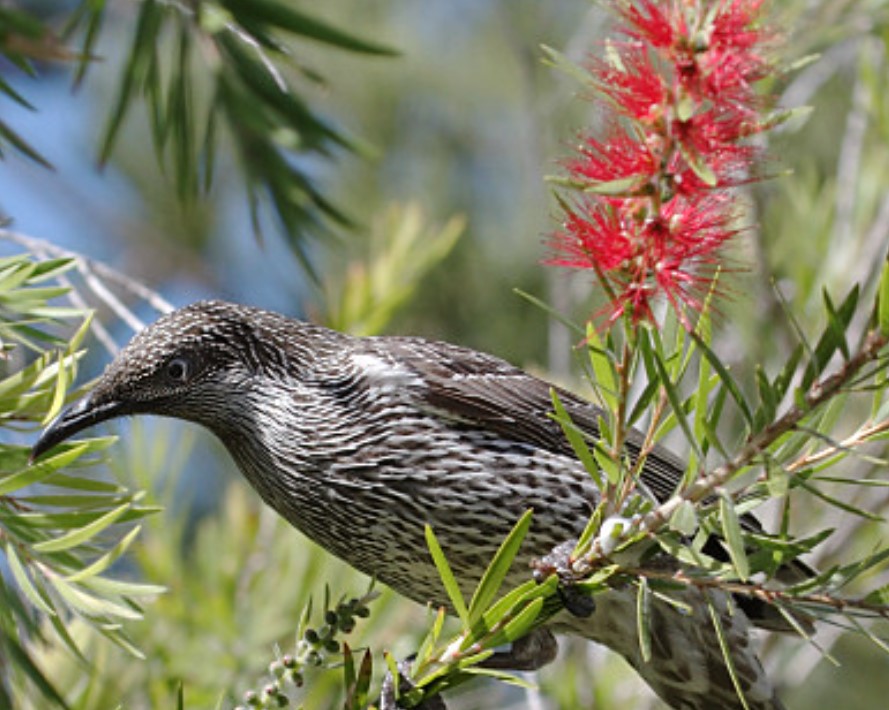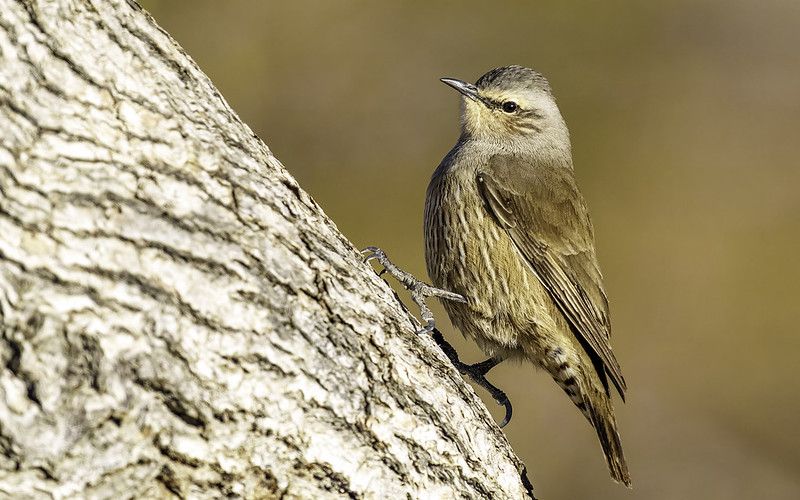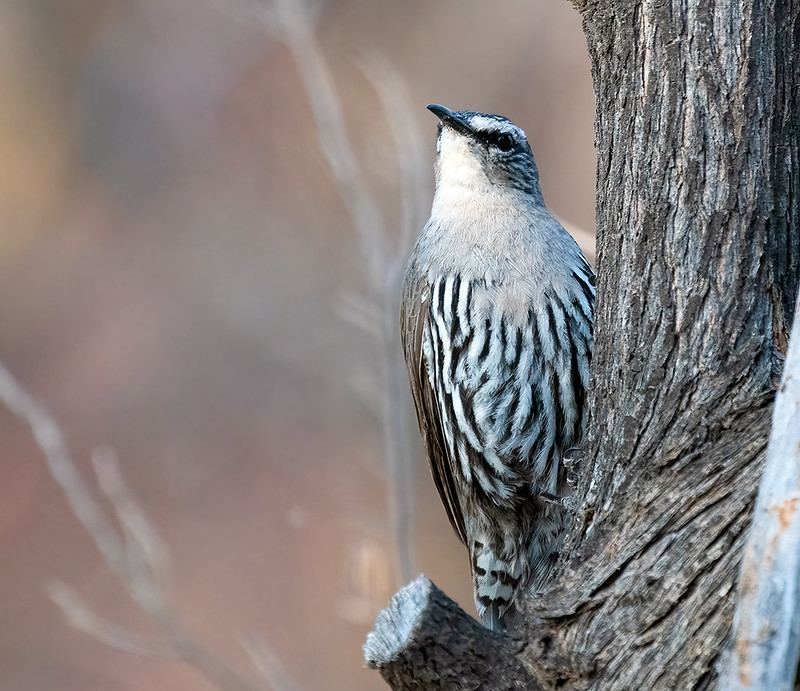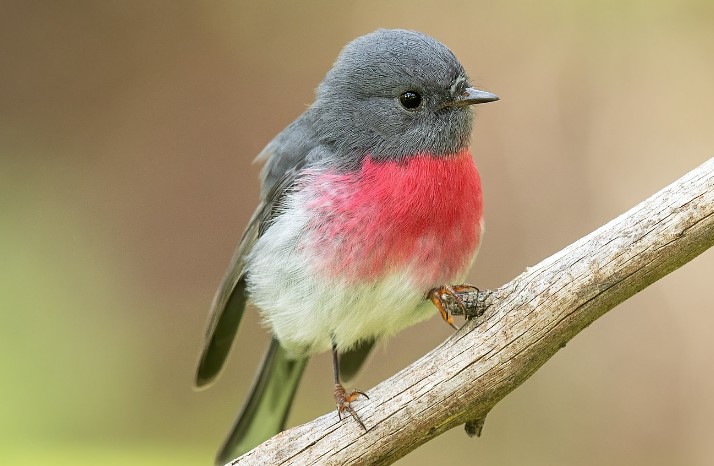FAMILY:
Sun parakeet (Aratinga solstitialis), also called sun conures in aviculture, are medium-sized, vibrantly colored parrots native to northeastern South America. It belongs to the family Psittacidae.
TALKING ABILITIES
Some individual Sun Conures have managed to acquire a vocabulary of a few dozen words, although that’s not true of all Conures. It is essential for sun conures to interact with others constantly in order to stay mentally stimulated and socially stimulated. Despite their captivity, they are quite capable of learning tricks and speaking quite well.
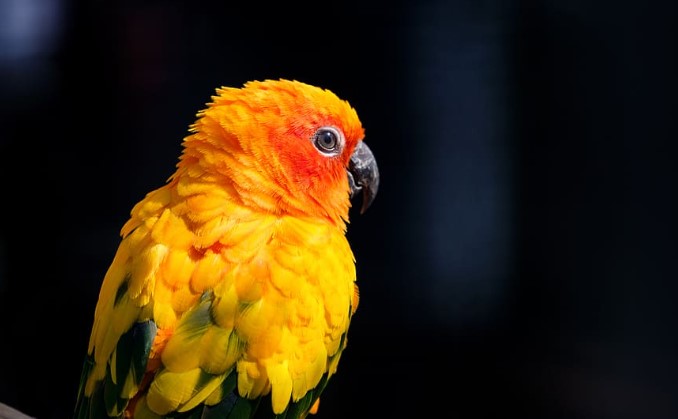
IDENTIFICATION:
ADULTS General plumage yellow, variably tinged orange on the forehead, sides of the head, lower abdomen, rump, and lower back. The under tail-coverts green-tinged yellow; mantle, lesser, and median upper wing coverts and underwing coverts yellow variably marked green.
The undersides of flight feathers are dull grey; secondary coverts are green and broadly tipped yellow. The primary coverts and outer webs of flight feathers are dark blue; the tail is above olive, below olive-grey; the bill is grey-black; the bare eye-ring grayish-white; the iris is dark brown; and the legs are grey. The JUVENILE crown was marked green; the upper back and scapulars were green slightly edged yellow; the rump and lower back tinged red; the upper tail coverts green-tinged yellow. The greenish throat; breast and abdomen are orange; under the tail coverts green margined paler green. Moreover lesser and median upper wing coverts green edged yellow; bill paler grey; cere and bare eye-ring white.
Wingspan
The wing span of a male parrot is about 146–160 mm, the tail is 131–146 mm, exp. cul. 21–25 mm, tars. 16–18 mm. The wing span of a female bird is about 150–162 mm, tail 121–146 mm, exp. cul. 19–24 mm, tars. 16–18 mm.
Read More – Yellow-chevroned parakeet (Brotogeris chiriri)
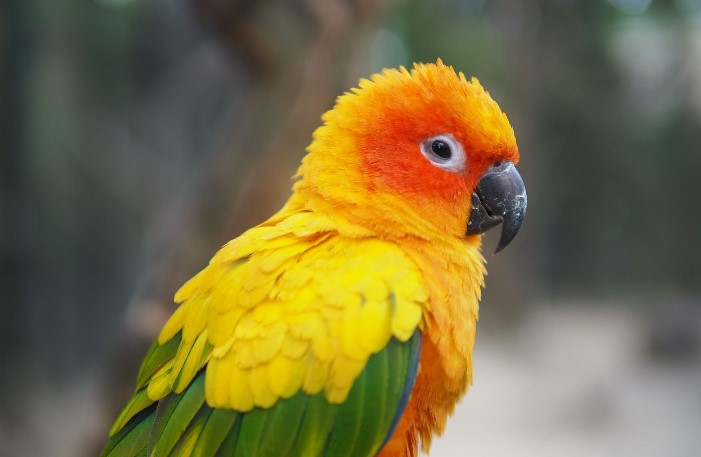
DISTRIBUTION
Sun Parakeet found in the lower Amazon River basin, where confined to the upper Rio Branco region, northern Roraima, far northeastern Brazil, and central and southern Guyana east to the Kabalebo River in western Suriname; perhaps extralimital in extreme southeastern Venezuela. Where an unconfirmed sighting of a flying bird made south of La Gran Sabana in the late 1970s probably was of this species.
A sight record from Kourou, coastal French Guiana, is highly doubtful and probably refers to an escaped cagebird. Recent reports have come almost exclusively from the Karasabai district in the Rupununi River region, southern Guyana, and in and around Boa Vista, northern Roraima, Brazil.
SUBSPECIES
At this time, four similar allopatric taxa are included in the ‘solstitialis complex’ as separate species, but previously three of these taxa – A. solstitialis, A. jandaya, and A. auricapillus – have been treated variously as subspecies of A. solstitialis or as separate species in single superspecies.
The treating of three taxa as subspecies has led to uncertainties about their vulnerability and to errors when referring to all birds, irrespective of where they occur, simply as A. solstitialis. They note also that molecular analyses reveal only a tiny amount of genetic divergence between them, so representative of a current origin, but the results give evidence that they are separate, well-defined species, and there is no evidence of interbreeding in the wild.
Subsequently, A. maculata from north of the Amazon River in southern Amapá and northern Pará, northern Brazil, has been differentiated as a separate species and also included in the ‘solstitialis complex’. I follow the arrangement of including all four taxa as separate species in a single superspecies, but am doubtful that specific differentiation between A. solstitialis and the very alike A. maculata is warranted.
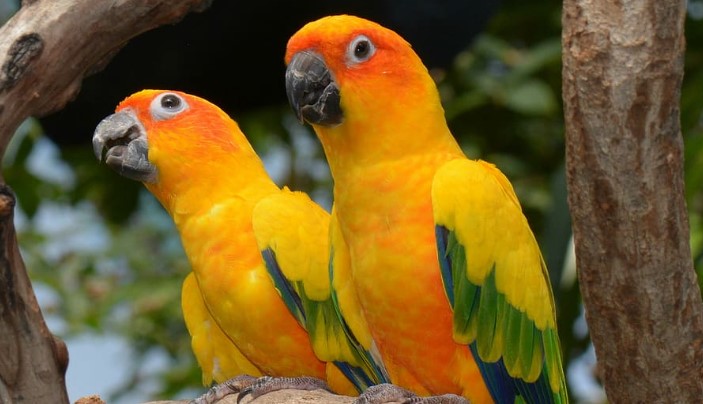
Read More – Alexandrine parakeet (Psittacula eupatria)
HABITATS
Sun Parakeets inhabit a broader range of habitats than previously realized and are found in open savanna, savanna woodland, forested valleys, and secondary growth. Although they use forest edges it seems that quite a large expanse of intact forest is necessary. About 175 km and 200 km north of Boa Vista, northern Roraima, northeastern Brazil, a flock was observed in open savanna and in dry scrubland with rocky outcrops that supported thick vegetation. Open plains with flowing creeks surrounded by Mauritia palms and savannas without isolated, well-vegetated rocky outcrops were uninhabitable by birds.
An area of tall grasses and moist forests, near Karasabai, in southern Guyana where the savanna of the Rupununi River rises into the foothills of the Pakaraima Mountains, flocks were encountered in steep hillside forest surrounding a small farm, and at times birds came to feed in low bushes bordering a cassava field.
An abundance of suitable habitat at this site provided ample evidence that trapping for the live-bird market, not habitat loss, was the cause of the rarity of these parakeets, and one of the ‘toshaus’ or captains of the village thought that, after the confined population had been trapped out in the 1990s, repopulation may have originated with some birds that escaped from the trappers.
In 1980, near Devis Vallen on the Kabalebo River, western Suriname, a bird was observed in a rather open secondary forest. Moreover, in 2008, a flock of 10 to 12 Sun Parakeets was encountered within the urban confines of Boa Vista, in northern Roraima. It was suspected that this flock may have originated from birds that escaped from a holding cage after being confiscated as chicks.
MOVEMENTS
There is no clear information as to whether Sun Parakeets move as nomads or as seasonal patterns based on food availability.
SIZE
The size of Sun Parakeet is about 30-32 cm in length and weighs about 120-125 g.
LIFE SPAN
In captivity, Sun Parakeet lifespans range from 15 to 30 years.
BEHAVIOUR
Sun Parakeets are spectacular birds, and many consider them to be the most beautiful of neotropical parrots. When flushed from low bushes in which they were feeding, a party of parakeets flew up to a light on the topmost projecting leafless branches of a tree, where the early morning sun shone directly on to their plumage. At other times, these parakeets could be surprisingly inconspicuous as they fed quietly amidst shrubby vegetation.
In the savanna of the Rupununi River, in southern Guyana, the village of Karasabai and its surrounds are frequented by some of the last flocks of Sun Parakeets. The striking beauty of these parakeets was most evident when they were seen in swift, direct flight before disappearing into dense forest, or when observed at close range.
Small flocks of birds traveled to a small farm from a nearby hillside forest each day. They arrived around 0900 hours and remained there until mid-afternoon. They were confiding and could be watched at close quarters. Juveniles often were seen engaging in playful actions, including nipping at each other’s feet and begging from adults.
CALLS
In-flight these parakeets emit a loud, screeching screek-screek, repeated rapidly in short bursts. Also given is an un-parrot-like, high-pitched repetitive wheezy note and, while feeding or when perched in clear sunlight, birds occasionally emit more typically parrot-like chuckling notes. However in flight, they were extremely noisy, and the screeching call notes could be heard long before the birds came into view.
DIET AND FEEDING
Sun parakeet prefers seeds, fruits, nuts, berries, and probably blossoms to make up the diet. Also feeding on the red fruits of cacti growing out from between rocks, and on the ground underneath were found chewed pieces of the white pulp with numerous black seeds. There was a field of cassava beside a low bush in the Rupununi River savanna, southern Guyana.
Read More – Carolina Parakeet – Extinct Specie of Neotropical Parrot
